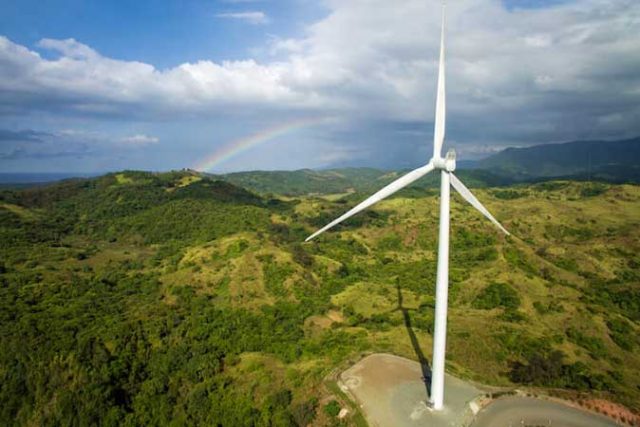PHL solar, wind investments projected at $11.9 billion by 2030
By Angelica Y. Yang – June 28, 2021 | 8:02 pm
from Business World

THE PHILIPPINES will attract an estimated $11.9 billion worth of wind and solar power investment by 2030, with renewables financing expected to double in the Asia Pacific this decade, an energy research and consultancy firm said.
“For the Philippines, wind and solar will attract $11.9 billion for 2021 to 2030. So that’s around 1% of APAC total wind and solar investments. Southeast Asia (SEA) contributes to around 6% for reference,” Wood Mackenzie Senior Analyst Rishab Shrestha told BusinessWorld in an e-mail.
He expects the region’s solar capacity to ramp up by 2030.
“Southeast Asia is one of the hottest solar market regions in the world, with installed capacity more than doubling every year since 2018. There will be a momentary slowdown with subsidies pulled back, but the region will add over 100 GW of solar in the next 10 years,” Mr. Shrestha said separately in a statement on June 22.
Wood Mackenzie’s Research Director Alex Whitworth said that power investment in the region is projected at $2.4 trillion in the current decade, with renewables accounting for $1.3 trillion.
He added that Wood Mackenzie expects coal to account for 30% of fossil fuel investment in the decade, declining due to the emergence of gas.
“Fossil fuel power investments are expected to decline by around 25% to $54 billion a year,” Mr. Whitworth said.
Meanwhile, fossil fuel investment in the Philippines is projected at $6.1 billion for the remainder of the decade, averaging 31% of power investment each year, according to Mr. Shrestha.
Along with the growth of renewables investment, carbon emissions from the region’s power sector will peak at 7.3 billion tons (BT) in 2025, or 1.8 tons per person, which is less than half the level of most developed countries, based on Wood Mackenzie estimates.
“Although we expect a 47% drop in carbon emissions from the power sector from its peak of 7.3 BT in 2025, inertia in the coal power fleet will prevent Asia Pacific from reaching carbon-free power by 2050,” Mr. Whitworth noted.
“Adapting new emission-reduction technologies such as carbon capture and storage and green fuels (hydrogen, ammonia, biomass, etc.) into coal and gas generation will be key in reducing power sector emissions,” he added.



